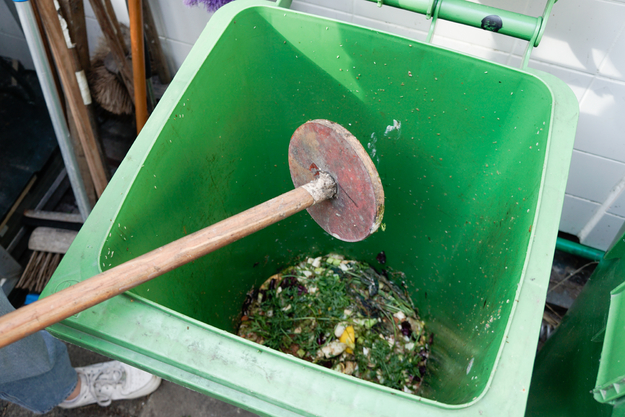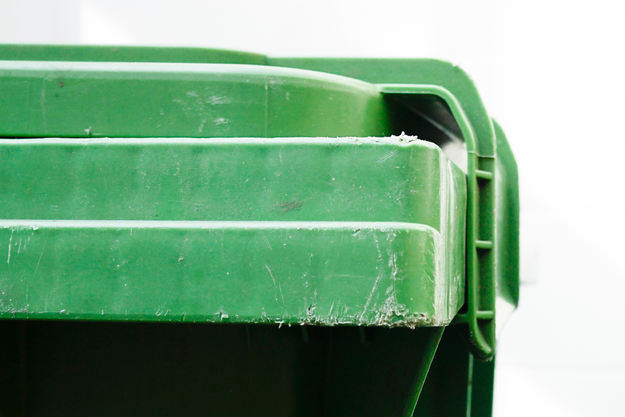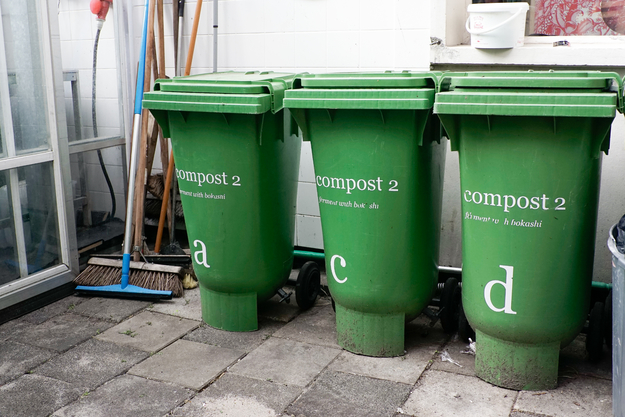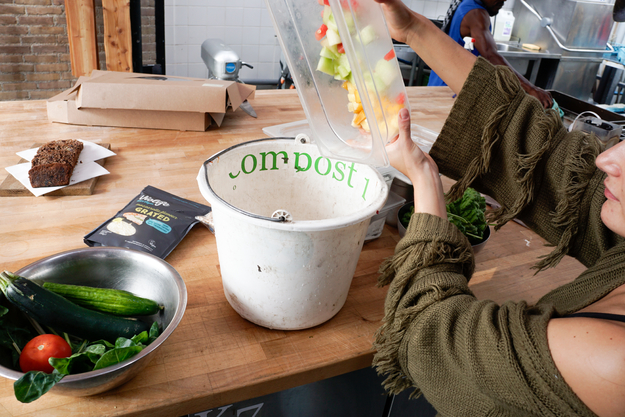Bokashi and the flow of Mediamatic
In busy times
Checking the Bokashi should be part of a weekly routine, ideally every Tuesday. This is because Communal gardening happens on a Tuesday afternoons. After checking the Bokashi, keep in touch with Elise (or the manager in charge of communal gardening) if there is a bin to be emptied or tea to be used on the plants. The communal gardening can be used to utilize these. With a team of two or three the Bokashi can be emptied into the compost and the tea can be used in the grow beds around Mediamatic (in a ratio of 1:100 - Bokashi tea: water)
On the Tuesday during the check in of how it’s doing, make sure the buckets are emptied and cleaned and not left to sit with food in them. This is particularly important if the restaurant has been open during the weekend.
If communal lunch is happening it is important that when new interns come to Mediamatic that you organise a time to talk through how to use it properly. A good time to do this is to gather people after a lunch has been cooked and the scraps are in a bucket ready to be put into the Bokashi. This way they can see how small to cut the pieces and how to use the bins properly.
In quiet times
When the Bokashi isn’t being used as often, there is very little to do with it. If the bins have been used previously, it is a great time to leave them sit and ferment. This means just making sure that the space is left clean and that the lids are left closed properly.
Seasonally
Summer
As Bokashi is a fermentation process, temperature can have an effect on the outcome of both the Bokashi itself and the tea.
In the summer
- Keep an eye on the buckets that the compost 1 buckets are not left to sit with food in them.
- Also make sure that the bins are closed properly. This not only helps with the anaerobic process, but flies are more likely to get in and then the bins become full of maggots. If maggots start developing the bin must be emptied, washed, and started again.
- If the temperature is anywhere above 20 degrees, make sure that the Bokashi bran is kept in the shade.
Winter
The Bokashi is fine in cooler temperature but below freezing it needs to be taken care of
- When icy, bring the bokashi bran in and leave it at the back of dry storage
- If tea has been tapped, make sure to put it in aquaponics or dry storage and not left out in the cold.
- If the bins are full they should be left longer to ferment- rather than 2 weeks extend it to 3 or 4.
Long term (possible) plans for Bokashi
Putting the roof on the space?
Having a better way to tea the Bokashi, having them on a height?
Having better tools scoop, labelled buckets etc.
Making an exhibition of Bokashi? (See here )
More practical information
If there are any questions, Simone Vos from Agriton is very helpful. You can drop her an email at svos@agriton.nl
Running low on Bokashi bran, contact Simone Vos as she sends new bran
The box with more bokashi bran is at the end of dry storage in a grey container



